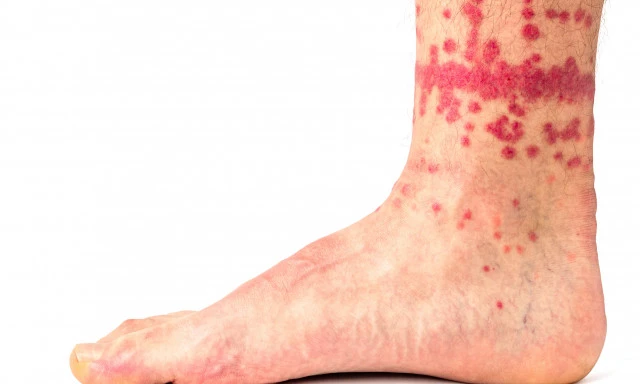Cat Fleas
Cat fleas are common parasites of cats and they will readily bite humans when their normal host is not available. Cat fleas are the most common flea in home infestations; bird fleas are also common and will readily bite humans, dog fleas are less likely to bite humans and human fleas are not common in New Zealand.
The Risks from Flea Bites
- Flea bites often cause an inflammatory response in the skin; a raised, red, itchy bite mark will form almost immediately after being bitten.
- Scratching flea bites can cause secondary infections.
- Fleas can transmit some diseases including:
- Murine typhus – This disease is carried by rats, but cats that encounter rat fleas can bring the vectors home. Murine typhus (Rickettsia typhi) causes fever, headache, a rash, and tiredness, muscle aches, nausea and vomiting are common.
- Cat scratch disease - The bacteria that causes cat scratch fever (Bartonella henselae), is common in felines. Cats pass the disease on to humans by biting or scratching a person hard enough to break the skin, or by licking skin wounds. Infection with cat scratch disease will cause swelling, redness, and even pus at the scratch site. Within two weeks, symptoms such as swollen lymph nodes, mild fever, fatigue, and poor appetite will appear.
The Flea Life-Cycle
Flea eggs are laid on the fur of their host after the adult female flea takes a blood meal. The eggs will fall off the animal onto areas where the cat rests. About 50% of the fleas in an infestation will be present as eggs.
The larvae hatch from the eggs after 2-14 days. The larvae feed on ‘flea dirt’ in the dust and detritus in carpets and other places the cat rests. ‘Flea dirt’ is the pre-digested blood excreted by the adult fleas. About 35 % of fleas in an infestation will be in the larval stage.
After 5-20 days, the larvae form pupae. The adult flea will not emerge from its pupa until it detects the presence of a potential host. They can detect vibrations from movement and heat from animals or people as they pass close by. About 5-10% of fleas in an infestation will be in the pupal stage.
The first thing adult fleas do when they emerge from their pupa is to seek a blood feed from the animal or person they detected. Only 5-10% of fleas in an infestation will be biting adults.
Protect Your Feline Friends and Your Family
If you have cats as pets make sure their veterinary flea treatment is kept up to date. Your cats will regularly encounter other cats and visit places other cats have been and where they can pick up fleas which they will bring back into the home.
From the flea life-cycle, you will see that flea adults are a small proportion of an infestation and they do not spend much time on their cat hosts. This means that treatment of areas where the eggs, larvae, pupae and adults hide and spend the most time is vital to get rid of an infestation.
To get rid of fleas follow the Kiwicare 1-2-3 Flea Control Programme.
David Brittain
Kiwicare


